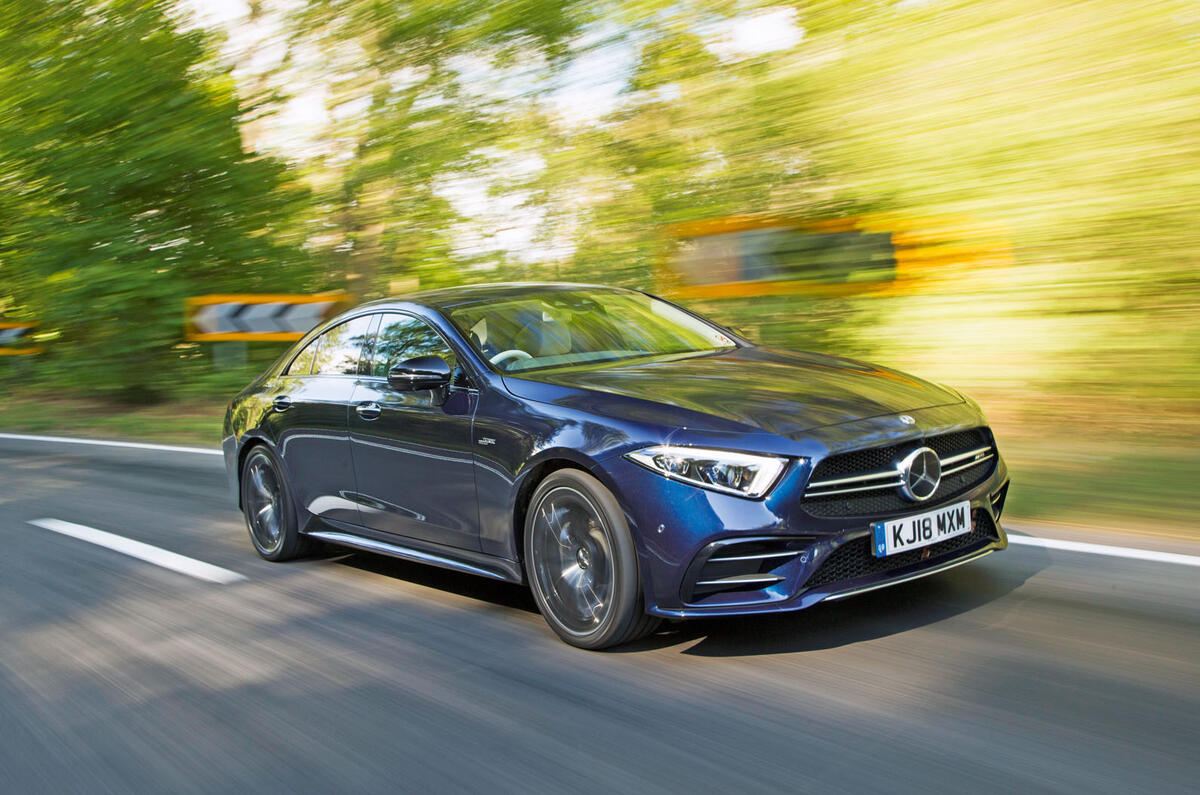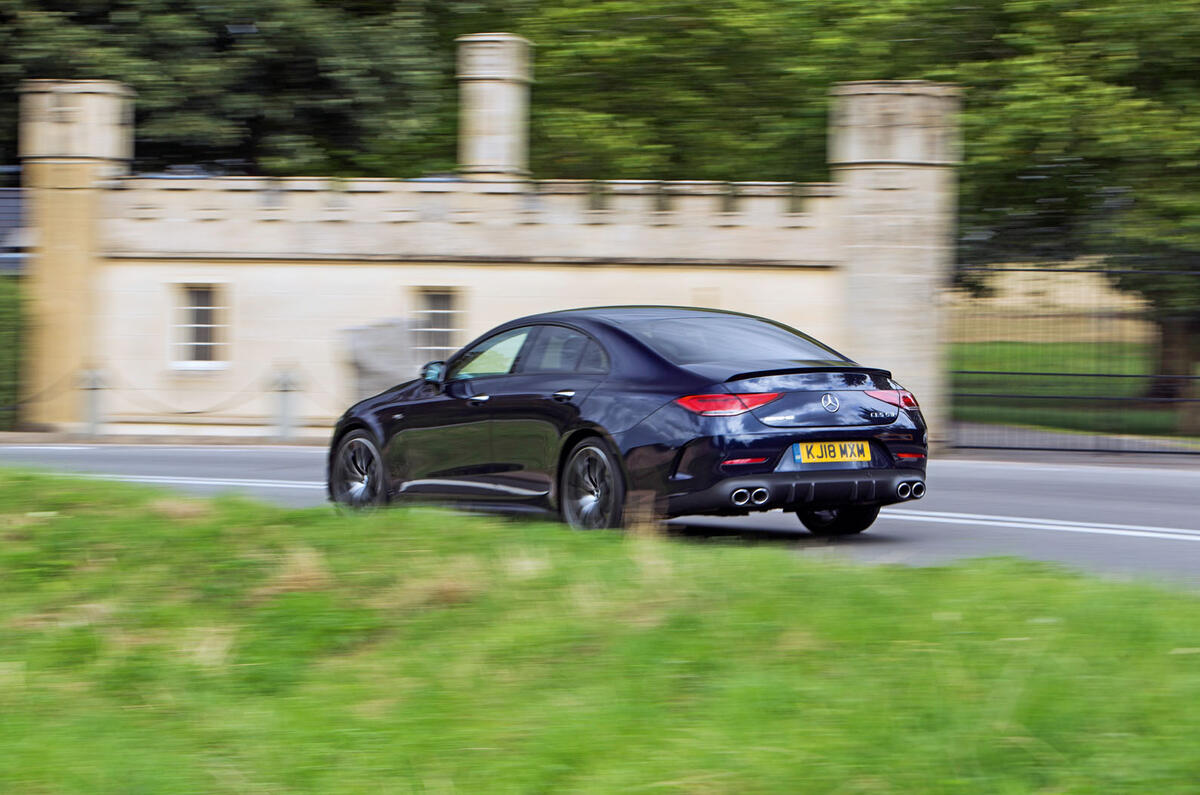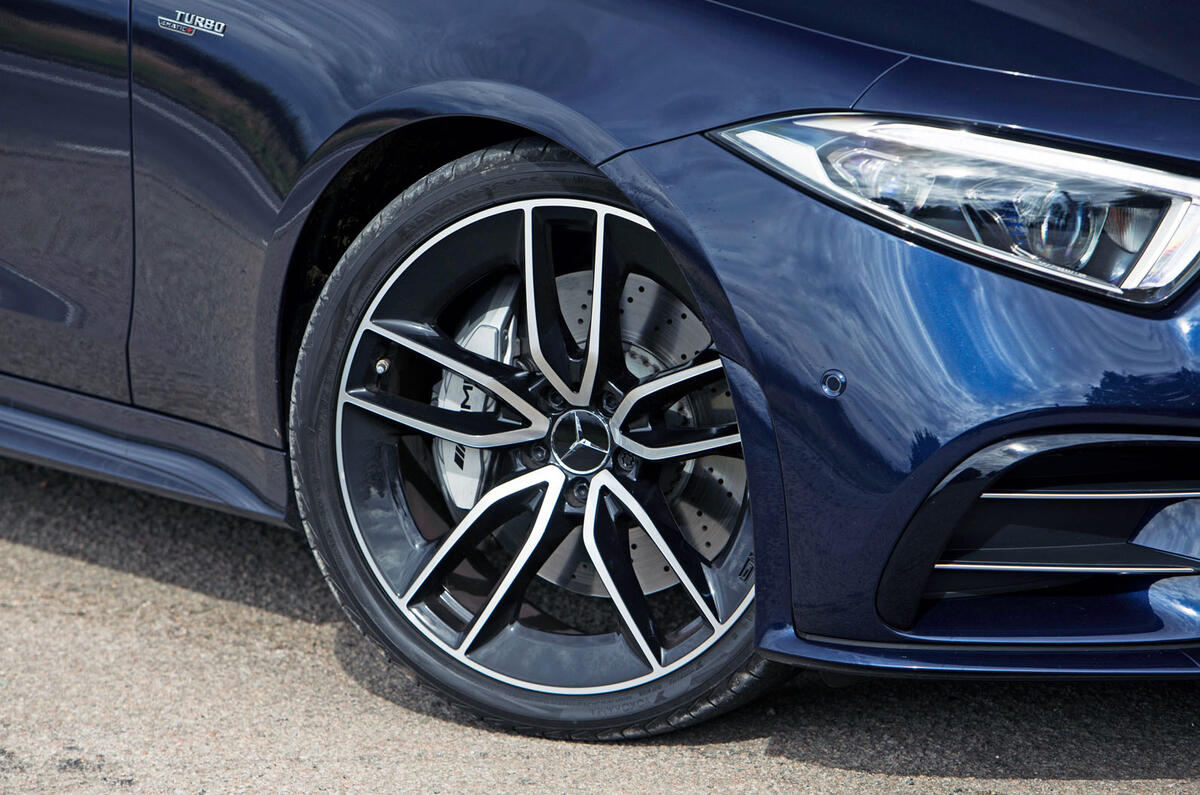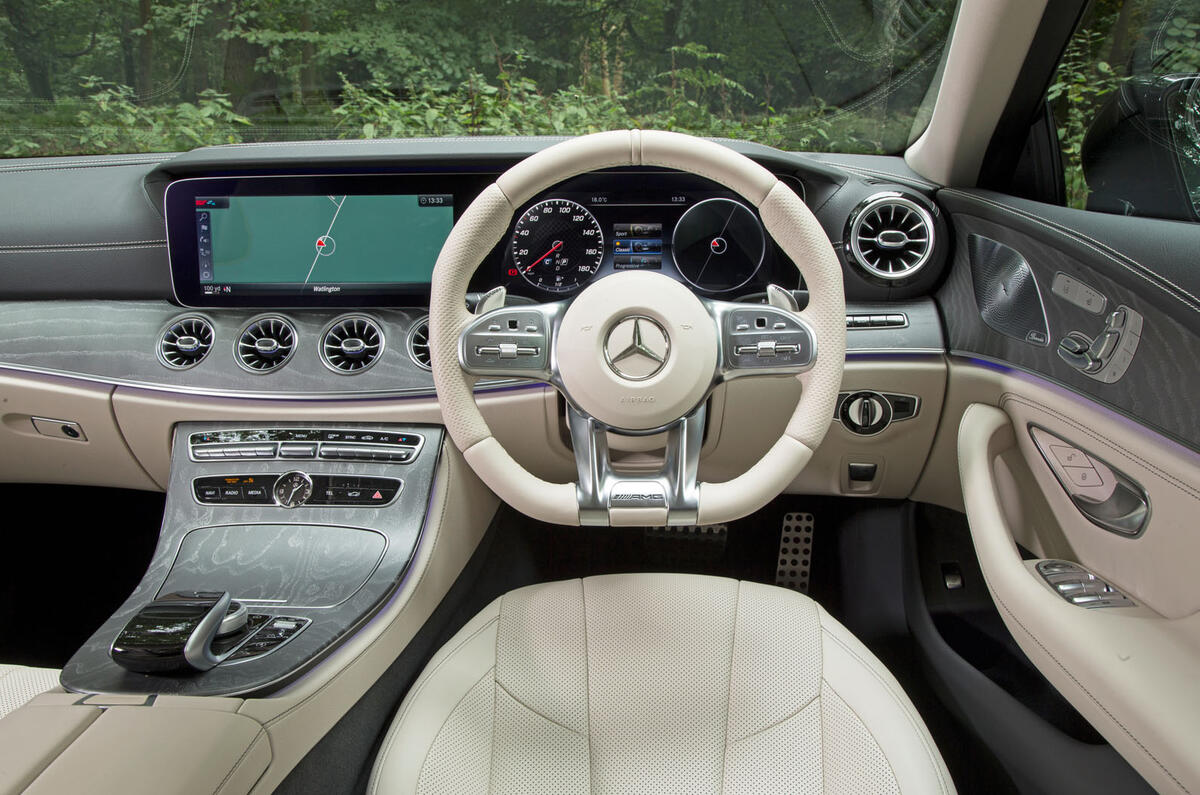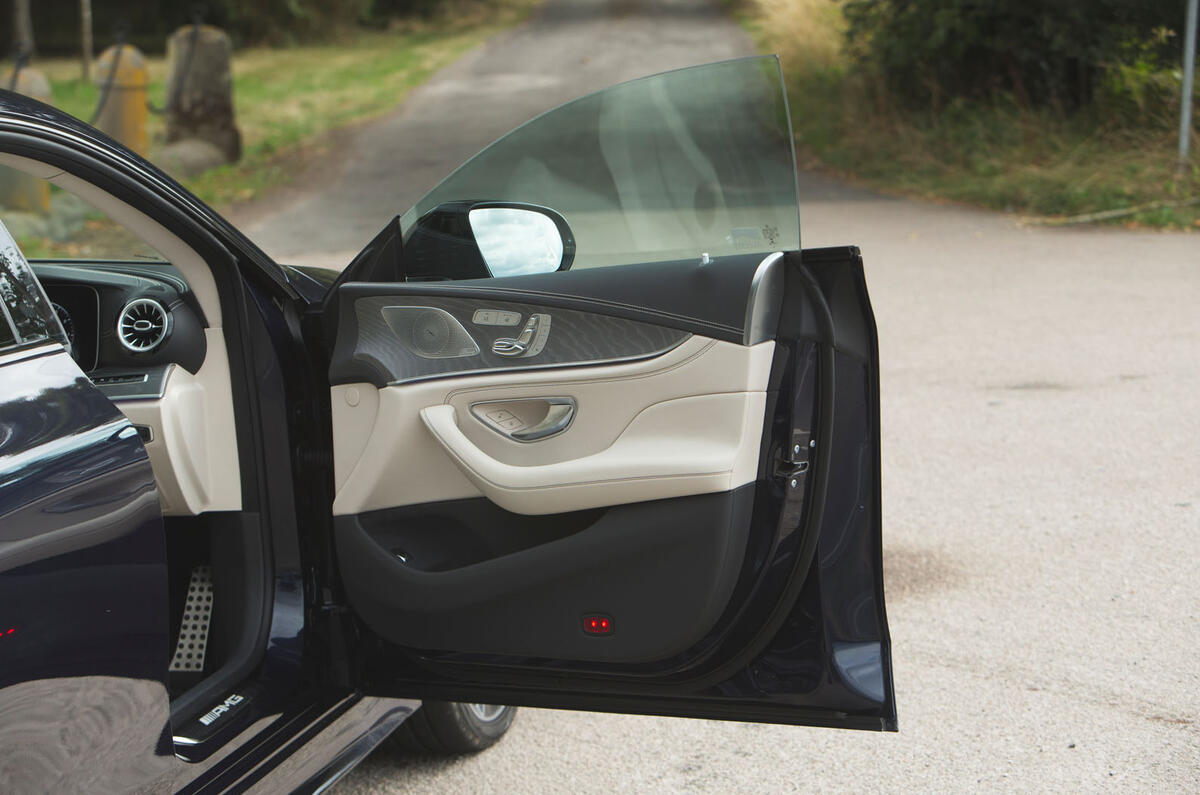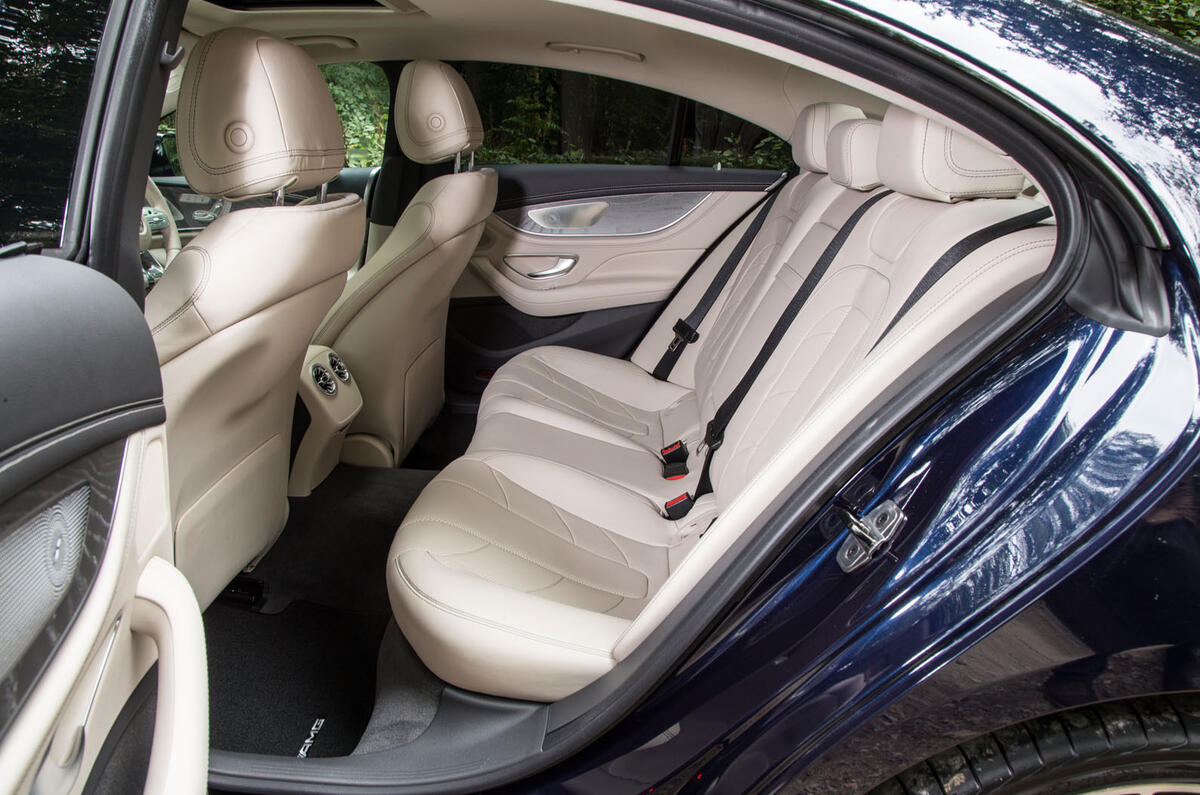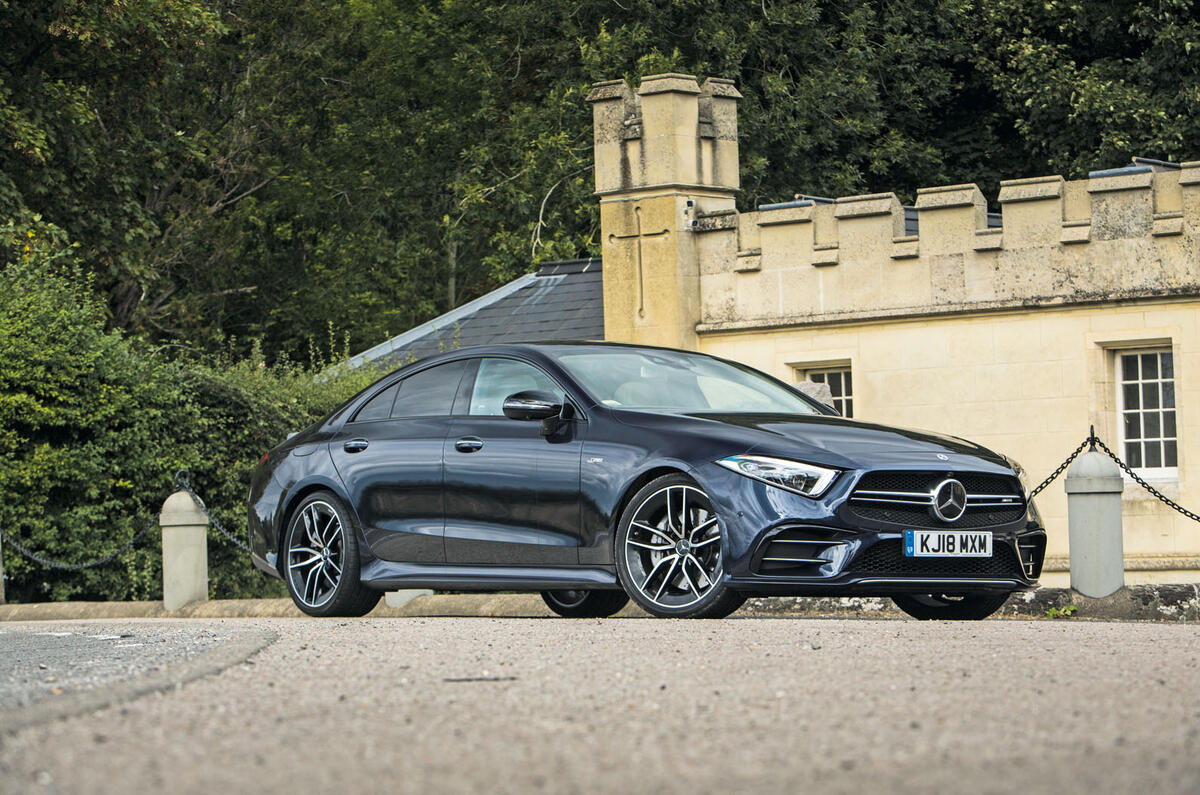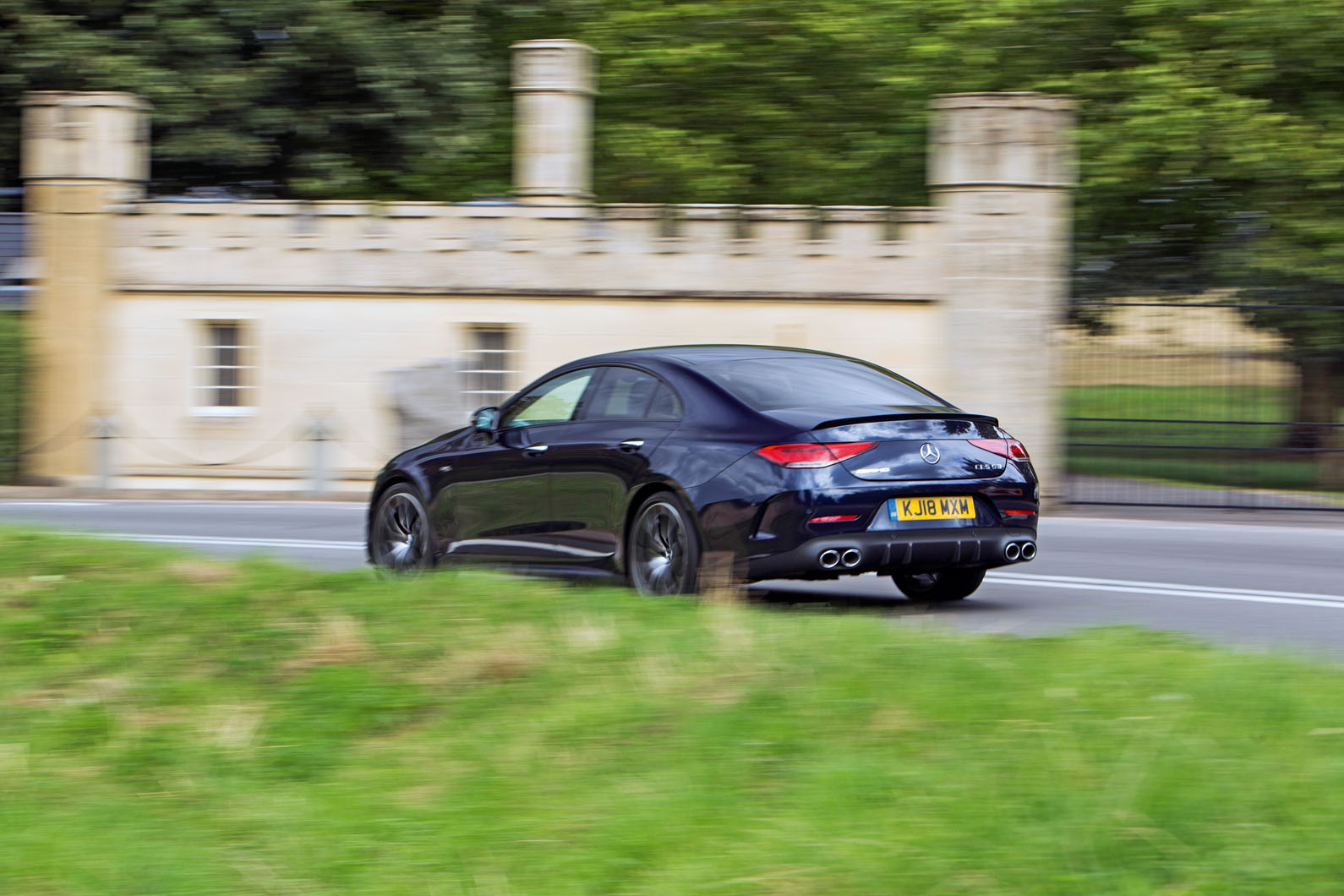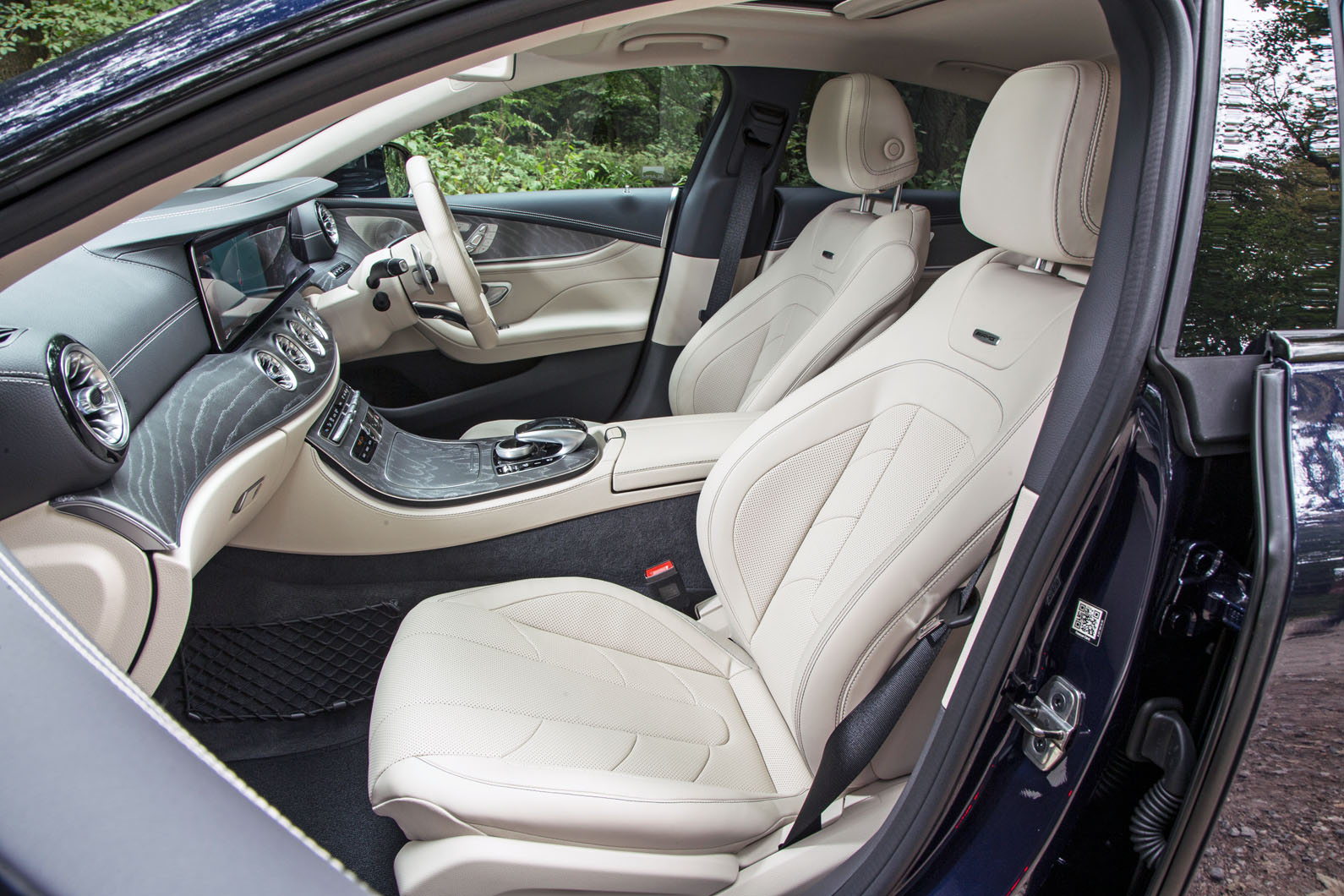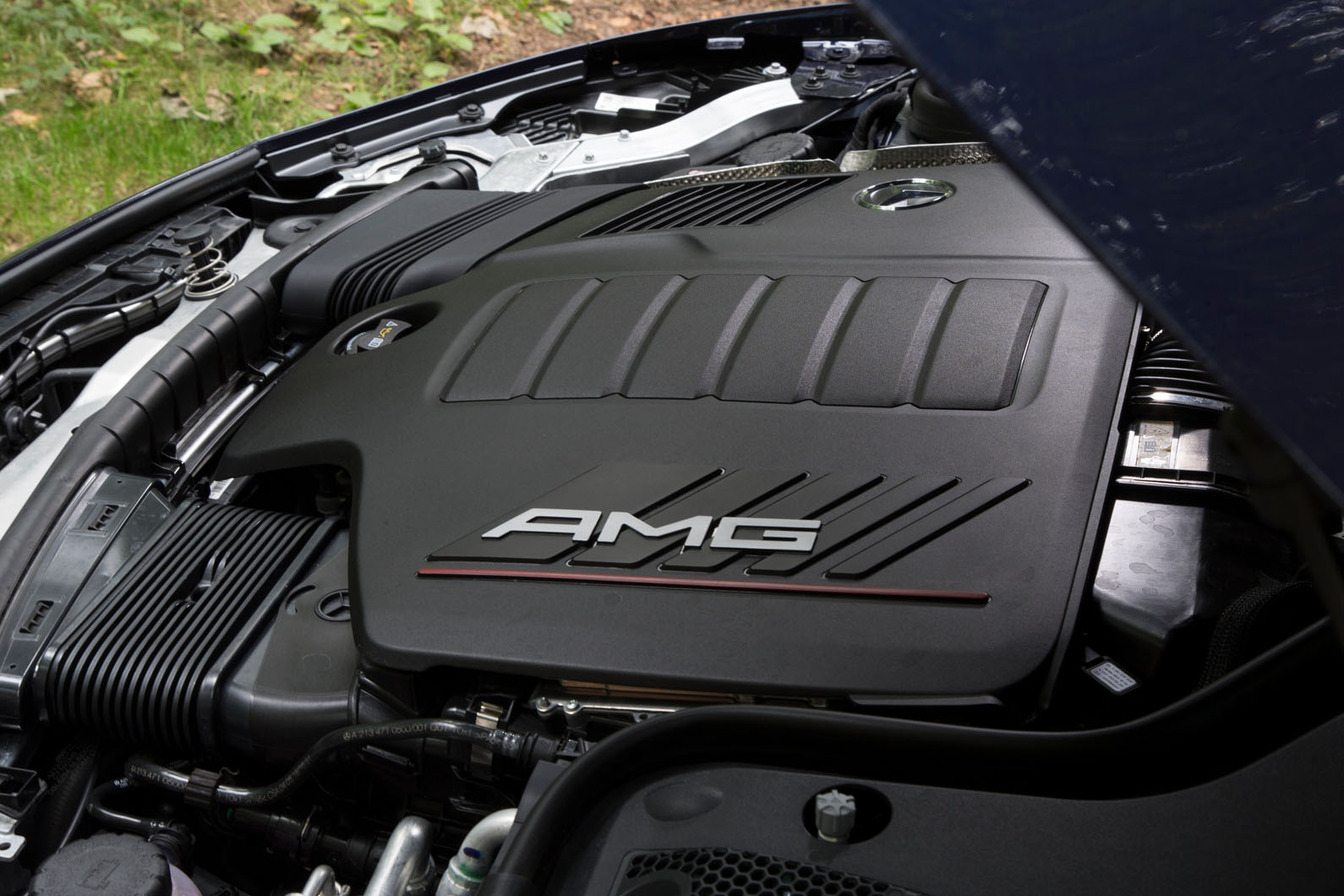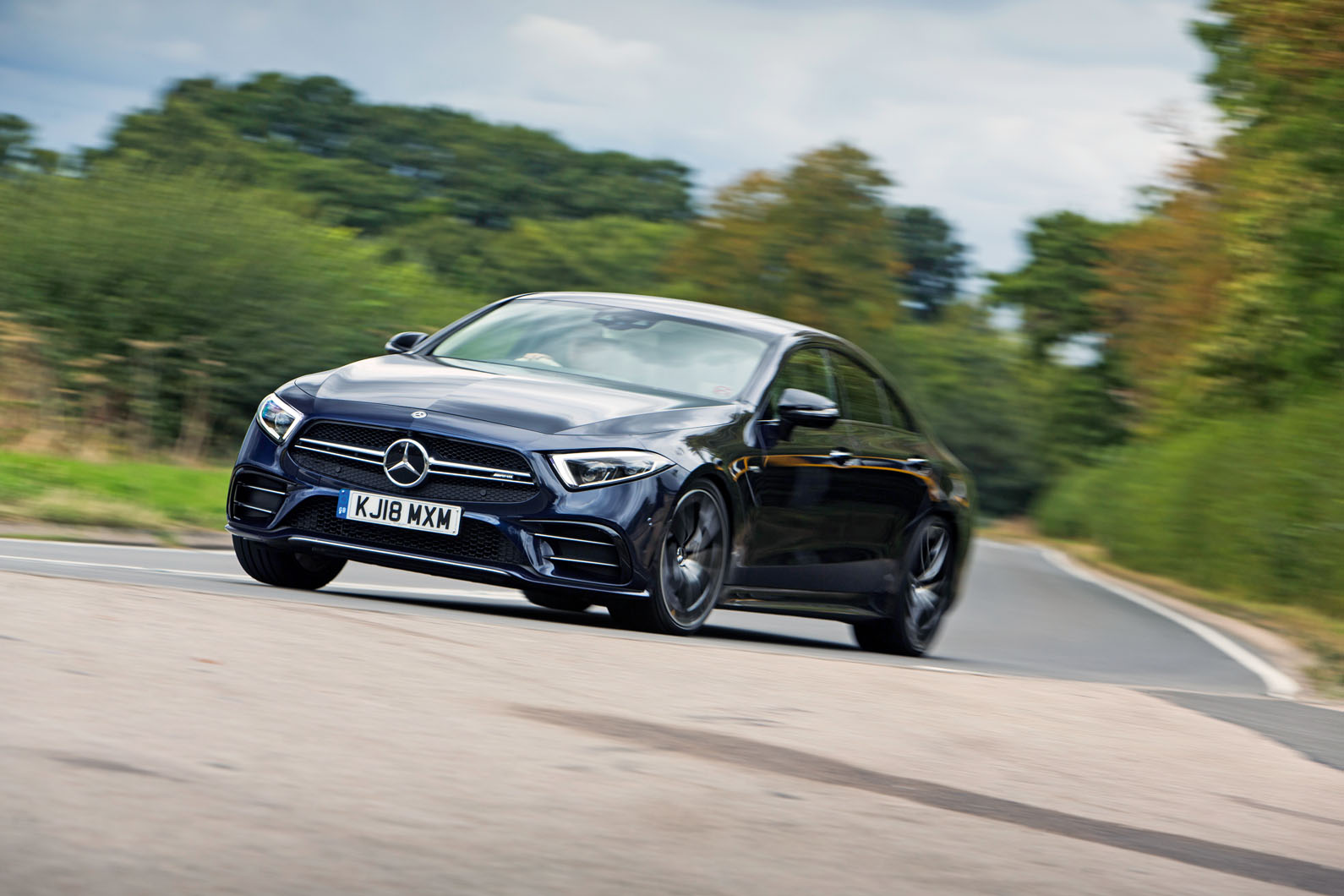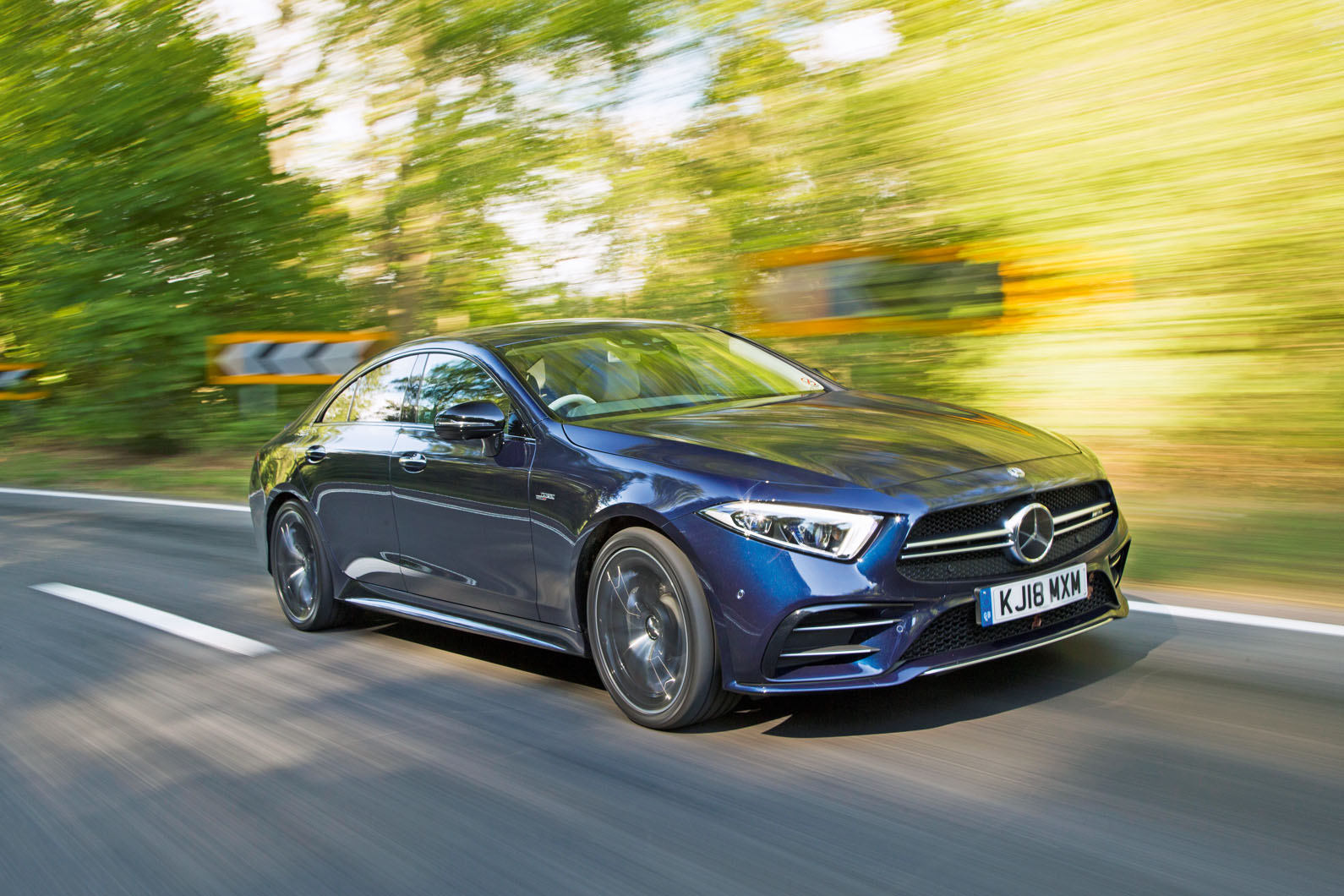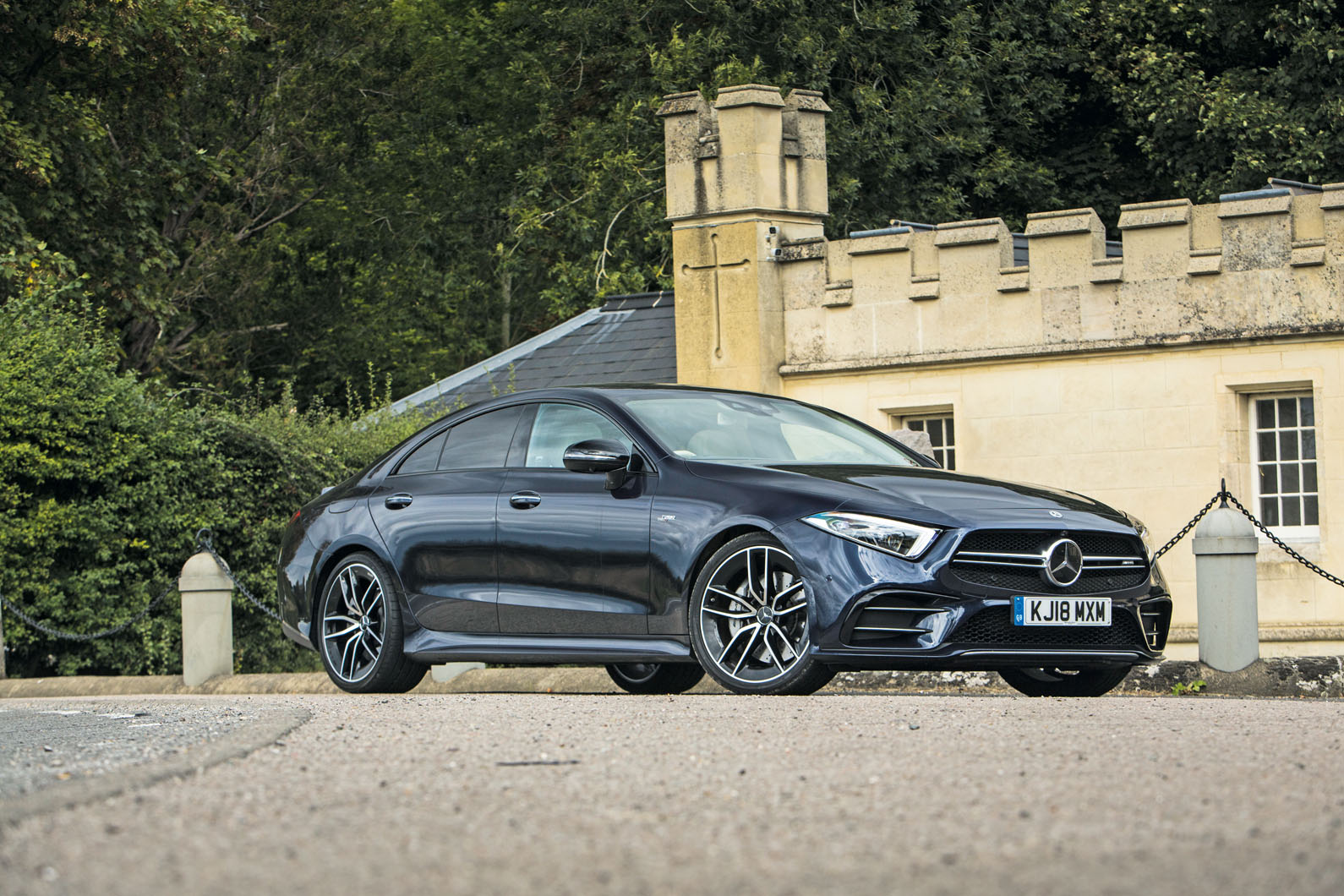The CLS 53’s isn’t a classic super saloon cabin, but instead pretty plainly one of a very modern, very advanced and seriously luxurious four-door GT subtly tweaked for a bit of go-faster flavour.
The car’s heated and ventilated massager seats don’t look like they’re about to hold you in place during the best drive you’ve had in ages, but it wouldn’t be beyond them. They have discreet AMG badges, as does the car’s steering wheel and its sill plates.
But, with the notable exception of an AMG-specific digital instrument display mode that you may or may not discover, those badges are actually the only discernible signs that the car has been through any kind of performance makeover at all.
One of the advantages of opting for the CLS 53 is that it gets as standard the Premium Plus package that’s a near-£4000 extra on any other Mercedes-Benz CLS. It means a 13-speaker Burmester stereo, 360deg parking cameras and Mercedes’ Comand Online infotainment system in all its glory.
The car has a pair of 12.3in-wide screens, placed side by side to look almost like one continuous display. The central display isn’t touch-operable but you can get to grips with it by using the rotary ‘scroll-wheel’ device on the transmission tunnel, the fingertip input pad above it or the thumbpad input on the steering wheel. Most road testers preferred the thumbpad, mainly because using it doesn’t require you to take a hand off the wheel.
The system doesn’t feature the A-Class’s latest ‘Hey Mercedes’ voice recognition software, but it accepts voice commands for navigation destination inputs and the like at the first time of asking.
The Burmester audio system is excellent and impressively resistant to distortion at high volumes.
The mix of cabin materials looks ritzy and expensive, the overwhelming majority of them substantial and pleasing to the touch. Its side-by-side windscreen duo of instrumentation and ‘infotainment’ displays broadcasts the car’s technological sophistication in what may seem, at first, an almost confrontational way. You get used to that quickly enough and it ends up being anything but distracting. Still, what you’re getting in the interior of a CLS 53 is, by and large, what you might get inside any other CLS, equipment level notwithstanding: material richness, tactile quality and plenty of what the Germans like to call ‘technical fascination’.
As far as practicality goes, the CLS holds an advantage over some of its rivals by offering belts and seats for three across the back row – although, as an adult or even a teenager, you wouldn’t want to occupy the car’s fifth seat for long. In the outer back seats, there’s space for all but the tallest adults to get comfy, with an entry and exit routine made slightly awkward by the car’s curvy profile.
Boot space is decent, though not as generous as it is in an Audi A7 Sportback or a Porsche Panamera; and not as accessible either because the CLS still has a bootlid while its German rivals both have hatchback rear ends. Here, you do feel that a trick is being missed; and it probably wouldn’t be if Mercedes hadn’t cancelled the CLS Shooting Brake replacement after the four-door had been designed.


